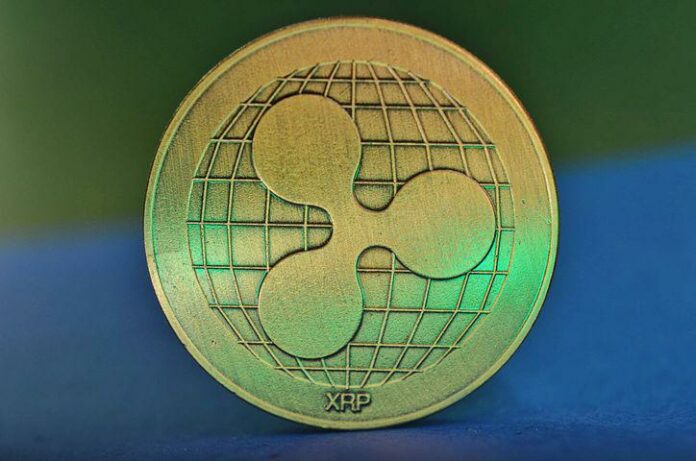XRP is a centralized cryptocurrency invented by Ripple Labs and developed to permit banks and all forms of financial organizations to harness the ability of blockchain technology to improve their cross-border dealing techniques. The foremost thing to comprehend is that Ripple is a platform as well as a coin.
The XRP cryptocurrency is comprehended as the cryptocurrency of banks. The Ripple protocol desires to complement the current banking method, where international payments facilitate finances, and gold. The purpose behind its invention was to make it faster and more affordable for such dealings.
Periodically there is chaos between Ripple and XRP, many people refer to XRP as Ripple and vice versa.
Ripple is a company that includes a payment platform of its own, developed to encourage the transfer of funds globally at a lower price. Part of the payment venue enables the use of XRP to develop market demand.
Who formed Ripple (XRP)?
In 2012, Ripple initiated selling XRP, although the company has redirected its priority from the digital currency in contemporary years to its international payments network.
Ripple was started in 2013 by Jed McCaleb, the originator of the EDonkey network, which holds the world’s most considerable group of financiers to invest in Ripple Labs.
XRP is developed to be used by companies and businesses as an affordable and efficient cross-border payment process.
Ripple states that XRP payments are paid in just 4 seconds and that XRP can regulate 1,500 deals per second throughout the day. There are 100 billion XRP tokens, these tokens are fixed no extra XRP tokens are created. Ripple possesses 61 billion out of 100 billion tokens, the rest of the XRP is in circulation.
What is XRP Utilized for
Currency trading with low prices. Many currencies cannot be converted directly into each other. Hence, banks need to use the US buck as an intermediary. Therefore, there is a double charge: to convert Currency into USD, and there is even an intermediary to convert USD to Currency, so it is more affordable than USD.
What are the advantages of Ripple?
- Ripple is planned to be a financial payment method, so it is more durable than bitcoin.
- Due to the increasing volume of marketing, they are very fast and cheap.
- Ripple is officially identified as an entity, as its priority is to support banks.
- The project does not have an adjustment period like many other cryptocurrencies.
- Ripple can deal with any currency or gold with finite fees.
How does XRP function?
Ripple, unlike Bitcoin and other altcoins, does not function under Blockchain technology. It operates on DLT (Distributed Ledger) technology along with its protocol for agreement. This permits them to verify transactions made within the RippleNet framework. This protocol is called the Ripple Protocol Consensus Algorithm. In this course, RippleNet owns particular servers and XRP tokens to verify and confirm transactions.
As in the case of bitcoin, these servers do not offer rewards but are operated by independent servers. This is why Ripple is highly centralized. Most of the destination addresses within XRP nodes are held by the same banks that are used by the XRP platform and Ripple Company Labs. Furthermore, it is estimated that over 60% of the tokens are owned by developers and not in the hands of exchanges and traders.
Ripple, on the other hand, has “pre-sale” a total of 100 billion XRP tokens since its launch. The most interesting thing about this “pre-mine” is that XRP is not mined, and Ripple Labs completely controls its expansion. Thanks to the smart agreement procedure, Ripple designers can currently issue up to 1,000 billion XRP tokens every month. This system also assures that unused XRP is produced to the safety deposit.
Is Ripple a Good Investment?
There is no such thing as a 100% safe investment. And each decision has its risks. In any case, it is up to you to decide.
Ripple is a low-risk investment with a lot of potential rewards that you should do some research before adding to your portfolio. If you are ready to invest for the long term, then this could be good for you. Below, however, are some advantages and disadvantages to guide you.
Pros:
- Its value is quite cheap: while all cryptocurrencies can be bought for whole bitcoin fractions, such as bitcoin can also be bought for 100 rupees, XRP is a token of a smaller value. So you can get a lot with little money.
- Earning Profit is Easy: It may sound like a futile thing, but the advantage of having a low price is that it is easy to make a profit from a nominal cost. So there is a lot of room for this coin to increase its value.
- Good enough for the economy: Ripple developed XRP with the aim of solving real-world problems with blockchain and cryptocurrency. It solves problems for major financial institutions and also accelerates the movement of money, which is good for the economy. If widely adopted, the Ripple Platform would give millions of merchants and entrepreneurs access to the global economy.
- Ripple’s market cap is in the third position: In the trading platform, the coin above is usually the market cap because it indicates how much influence or investment that coin has. Ripple has consistently been in the top third for the market cap in the crypto sector, despite falling a spot or two recently.
Cons:
- It is open source – meaning there is always risk involved. Once the code is available many people may try to hack it. Some of them may even be successful.
Ripple owns a substantial portion of XRP: Chris Larsen, the chairman of Ripple, owns a third of all XRP. Like other senior board members, Brad Garlinghouse, the CEO of Ripple, also has a considerable following. So investing in it is also a risk as few have too much XRP in their hands which can affect its price.

